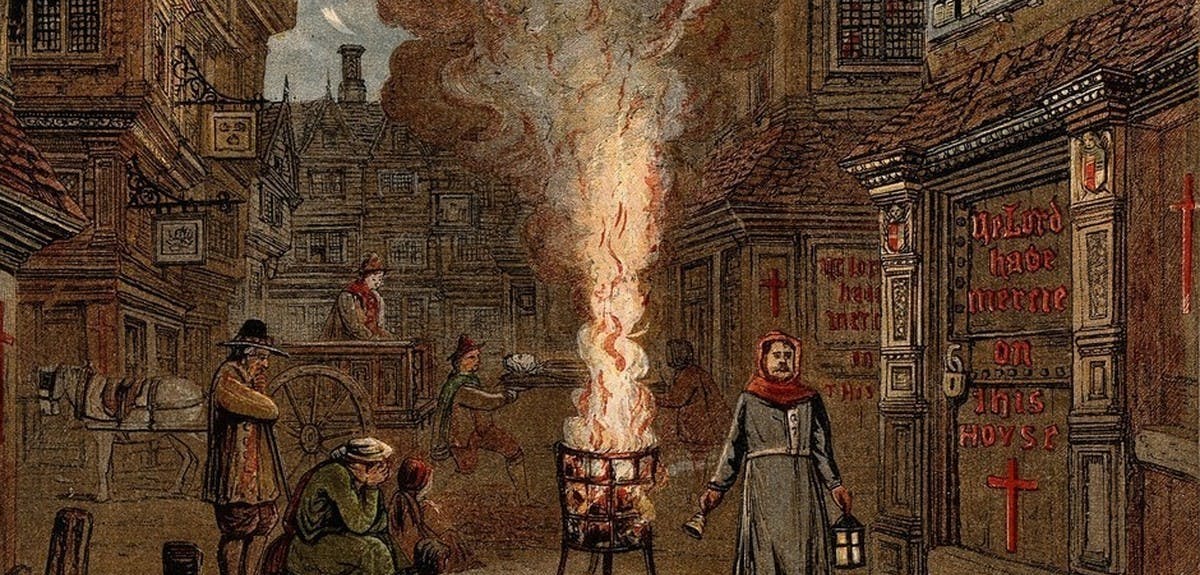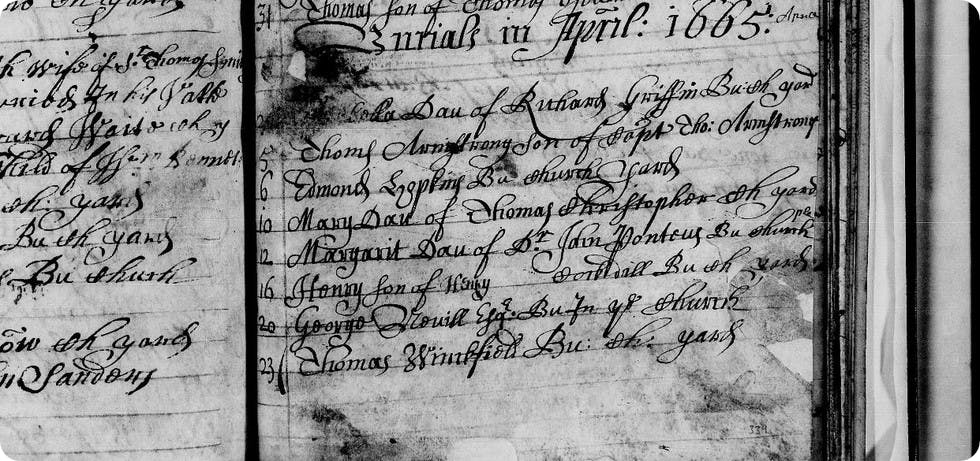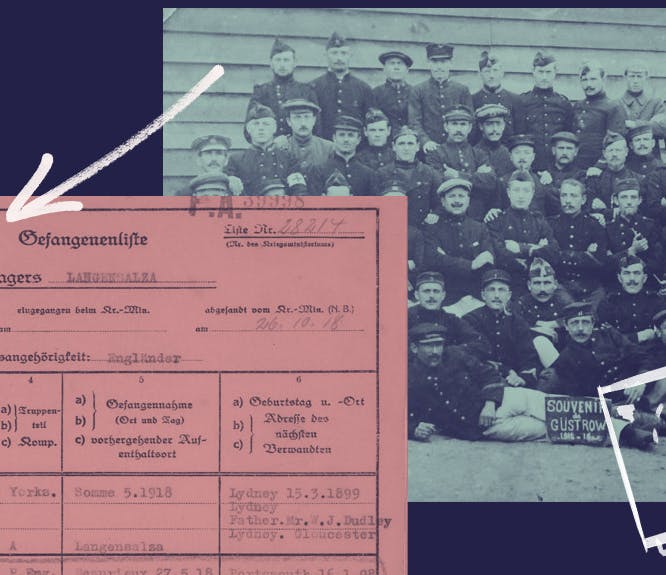First recorded Great Plague death discovered in parish record
2-3 minute read
By The Findmypast Team | May 27, 2016

In winter of 1664, a bright comet blazed over London and was the talk of the town.
Our superstitious London ancestors ominously debated what kind of catastrophic event this comet was a harbinger of.
Several months later, the answer would be clear to many - the Great Plague.
The Great Plague of London was the last great outbreak of the Bubonic plague, which had been the terror of Europe since the 1300's. It killed more than 100,000 people, a quarter of London's population.
The first recorded victim
Our recently released collection of Westminster burials contains what is believed to be the first recorded burial due to this outbreak of the plague:

Images reproduced by courtesy of The Lord Mayor and Citizens of the City of Westminster, London
How do we know what she died of? If we zoom in on her entry, you will notice a tiny indication in the upper right corner of the record, that reads PLA:

Images reproduced by courtesy of The Lord Mayor and Citizens of the City of Westminster, London
The plague had been a common threat in London for centuries, since the first Black Death of 1347. For this reason, the community prepared for outbreaks by appointing someone from each parish to inspect the bodies of the deceased and determine the cause of death.
The plague spreads
Within a few days, the plague had also cropped up in the nearby parish of St. Giles-in-the-Fields. This is where the true outbreak occurred - multiple cases were discovered among the crowded, poor and unsanitary tenement buildings. Though the households were quarantined, the local community broke down the door of the sealed house, releasing the victims into the city.
It's likely the plague would have spread regardless. By the time it was clear a full-on outbreak was on their hands, it was too late for Londoners to do anything other than flee. Many moved to the countryside while those who stayed were ravaged by the disease.
It peaked in September of 1665, killing 30,000 people that month. It finally began to decline during the winter months, with most of the population moving back after December.
Where did it come from?
It's difficult to trace the outbreaks of the Bubonic plague precisely. Most scholars believe this instance of the disease spread from Amsterdam - the Netherlands had a deadly outbreak of the plague that killed 50,000 people in 1664-65, and Dutch trading vessels frequently interacted with London merchants.
Though what came to be known as the Great Plague of London was the last severely deadly outbreak, the plague was really a common feature of 17th century London life: There were only 4 years between 1603 and 1665 without at least one plague death.
Outbreaks also occurred in 1593 (15,000 deaths); 1625 (41,000 deaths); 1640-46 (11,000 deaths) and 1647 (3,600 deaths).
How to search parish records:
Read more: The Reverend who filled his parish registers with insults
Related articles recommended for you

Browse new British Army records from Surrey to South Wales
What's New?

This Remembrance weekend, discover the wartime stories of your ancestors
What's New?

A complete guide to our World War 1 Prisoner of War records
History Hub

